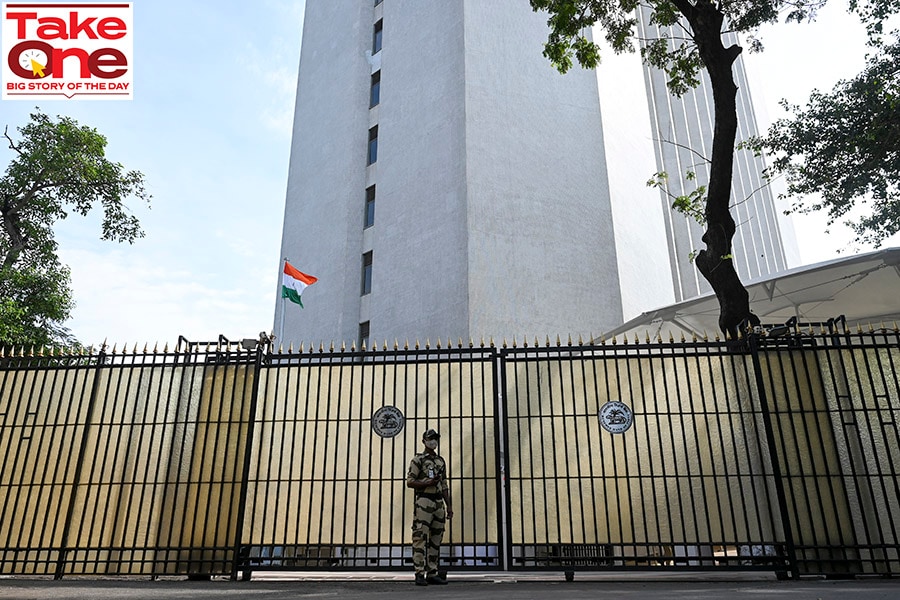
Post RBI's action against Kotak, lenders could become more cautious: Analysts
The regulator's action against the digitally focussed bank will see its quarterly earnings growth getting impacted. The RBI needs to have a deeper engagement with banks before cracking the whip. Banks, on the other hand, need to scrutinise their internal security and technology mechanisms more closely instead of just chasing growth
 In March this year, the RBI asked Federal Bank and South Indian Bank to stop issuing new co-branded credit cards, in an effort to improve regulatory scrutiny.
Image: Punit Paranjpe / AFP
In March this year, the RBI asked Federal Bank and South Indian Bank to stop issuing new co-branded credit cards, in an effort to improve regulatory scrutiny.
Image: Punit Paranjpe / AFP
The Reserve Bank of India’s (RBI) regulatory action against one of the largest private lenders, Kotak Mahindra Bank (KMB), on Wednesday will have repercussions for the bank—now under the new CEO Ashok Vaswani—raising concerns over in its future growth path if the restrictions are not lifted soon. It also raises deeper concerns for all banks in the country, signalling that no one will be spared and that introspection, rather than balance sheet growth, needs to find priority for managements.
The bank will have to cease and desist, with immediate effect, from onboarding new customers through its online and mobile banking channels and issuing fresh credit cards. KMB can, however, service its existing customers, including those for credit cards.
This action has spooked investors and the KMB stock fell as much as 13 percent to a low of Rs1,602 on Thursday, from its previous close of Rs1,843 at the BSE.
The RBI took this action based on concerns arising from its “IT examination of the bank for the years 2022 and 2023 and the continued failure on part of the bank to address these concerns in a comprehensive and timely manner”, the central bank said in a statement posted on its website.
“Serious deficiencies and non-compliances were observed in the areas of IT inventory management, patch and change management, user access management, vendor risk management, data security and data leak prevention strategy, business continuity and disaster recovery rigour and drill,” the RBI note said.









